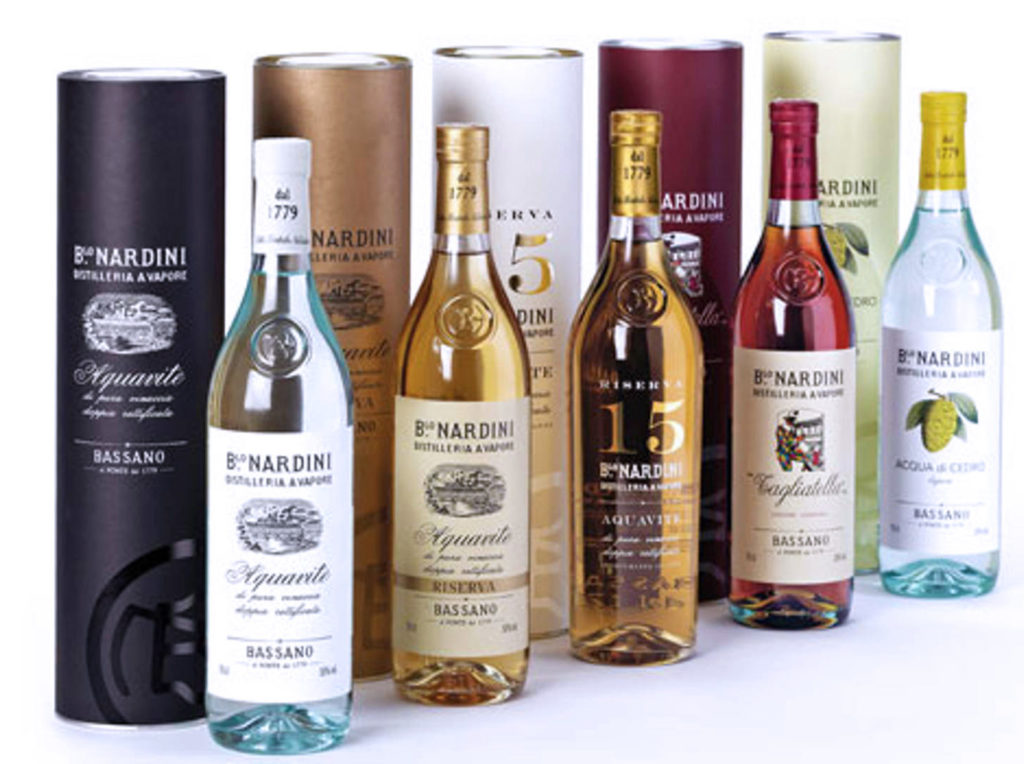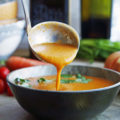
what is grappa?
For the uninitiated, grappa is a fragrant, grape-based pomace strong brandy ranging from 70 to 120 proof, traditionally produced in northern Italy and consumed worldwide. Its name comes from the Latin grappapolis, which means a bunch of grapes. The flavor of grappa, like that of wine, depends on the type and quality of the grapes used, as well as the specifics of the distillation process. Grappa is made by distilling the pomace, which are the skins, pulp, seeds and stems left over from winemaking after pressing the grapes.
The ancient Romans used pomace to create a wine that later became known Vin Piccolo in Veneto. This was the basic, inexpensive wine of the workers. Although fermentation of alcohol has been around for thousands of years, it was during the first century AD that distillation was developed. According to legend, it was a Roman soldier who first distilled grappa in the northern Italian town of Bassano del Grappa during the second century.
It took hundreds of years for broad applications of distillation to take place. Each alchemist zealously guarded his secret and especially the recipes, a practice that continues to this day for distillers. The earliest method of distilling heated wine to create the grappa, which is where the word brandy comes from, translating as “burnt wine.” The Benedictine Monks at the School of Salerno, the world’s first medical school, were the first to document the process during the 12th century. Used for medicinal purposes, it was recognized even then as an effective digestive. The introduction of water as a coolant in the distilling equipment a century later, enabled a substantially larger amount of distilled grappa to be produced. During the Renaissance, the Jesuits studied the techniques used to produce brandy and grappa and their methods were used until recent times. It was during the 18th century that grappa became a separate grouping of brandy, distinguishing it as a spirit made from grapes, rather than distillates made from other fruits.


producing grappa
The modernization of grappa distillation only took place about 50 years ago. Refinements included the distillation of pomace under a vacuum, the use of varietal grapes and the aging in casks of various types of wood. Oak is most often used, but the more expensive grappa is aged in casks of acacia, ash and cherry. Professional tasters distinguish four categories of grappa, ranging from young distilled to aged and aromatic. Besides tasting, a way to test grappa is by rubbing a small amount on the back of the hand and sniffing. If the aroma is pleasant, the grappa is well made. Impurities in grappa come out in the vapor and can be easily distinguished in this way. Unaged grappa is clear, while aged those that are aged take on the hue from the barrels in which they are stored. Aged grappa tends to soften considerably with the amount of time spent in the barrel and is a very refined and more expensive spirit.
Many of the truly exquisite and most expensive grappa is made from a single grape variety, such as Picolit, Ribolla Gialla and Moscato, while many describe the finest grappa to come from the pomace of the noble Barolo of the Piedmont or Sassiaia, one the original Super Tuscans.
Among the most notable producers of grappa are Jacopo Poli and Nardini, the latter being the oldest and the largest. In 1779, Bortolo Nardini, already an expert distiller, established his inn and distillery strategically next to the historic wooden covered bridge in Bassano that crosses the Brenta River. His location proved an ample water supply and easily allowed his principle markets to be reached by boat. Nardini quickly became the leading producer of grappa in Italy. With two distilleries and a state-of-the-art manufacturing system, today Nardini produces four million bottles of grappa each year, which include a line of fine-aged grappas, such as its Nardini Grappa Riserva.


collecting grappa
Since 1898, Poli Distillerie has been an artisan grappa distillery solely owned by the Poli family. Some of their stills are among the oldest in use today with cauldrons completely made from copper in the age old tradition. Its products are rated among the best each year, a testament to the artisanal nature of production used in the family business, which specializes in distilling their grappa in small batches that are painstakingly managed. The grapes are all sourced from small producers and the entire creation process is designed to bring out the full flavor of the grapes. Any list of the best grappas in the world will feature numerous Poli grappas, such as their Sarpa Di Poli and Poli Grappa Miele.
The enchanting town of Bassano del Grappa, the capital of the spirit’s production, is in the Veneto region, not far from Venice. In the heart of the town, in front of the historic Ponte Vecchio, is the Poli Grappa Museum. In the museum, the history of distillation and the history of grappa are illustrated with elegance and efficacy in a brief but detailed educational tour. The museum contains a collection of ancient and modern books about grappa and the art of distillation. Among the most important works is “Liber de Arte Distillandi” (The Art of Distilling Book) which dates back to the 1500s and is the first printed text on the subject.
Poli is most famous for their elegant crystal bottles. Customers love buying and collecting them. A jewel on the front of the bottle adds to their beauty and creates a great gift. In the first room of the museum, the origins and evolution of the art of distillation throughout the years can be traced, from the alchemist’s intent on discovering an elixir of life, to the Renaissance doctors who distilled herbs and flowers for medical purposes and finally to the Venetian distillers who produced brandies to be enjoyed, rather than prescribed. The world’s largest collection of grappa miniatures are found in another room. While at the museum, try the olfactometers, which allows visitors to smell ten different kinds of distillates. You can also purchase Poli Grappa. The grappas of both Nardini and Jacopo Poli are imported and distributed by the Winebow Group.



Grappa Cocktails
In Italy, grappa is primarily served as a digestive, to aid in the digestion of heavy meals. Grappa may also be added to espresso coffee to create a caffè corretto, which means corrected coffee. Another variation of this is the ammazzacaffè, or coffee-killer, where the espresso is consumed, followed by a few ounces of grappa served in its own glass. In Veneto, there is resentin, or little rinser. After finishing a cup of espresso with sugar, a few drops of grappa are poured into the nearly empty cup, swirled and drunk down in one sip. It is also a popular ingredient in recipes ranging from stews to desserts. Try some of the following cocktail recipes.

Aperitivo Frutta e Grappa
Ingredients
- 1 1/2 tbsp Nardini Riserva
- 1 1/2 tbsp Ramazzotti Amaro
- 1 1/2 oz fresh grapefruit juice
- 1 1/2 oz fresh orange juice
- Orange peel to garnish
Preparation
Add the ingredients in the order described above into a tumbler with ice and stir. Garnish with orange peel.

Bassano Mule
Ingredients
- 1 1/2 oz Nardini Grappa
- 4 oz ginger beer
- 1 1/2 tbsp fresh lemon juice
Preparation
Pour the grappa and lemon juice into a mug filled with ice; add the ginger beer and stir gently before serving.

Fiori di Grappa Ruta
Ingredients
- 1 tbsp Nardini Ruta Grappa
- 1 1/2 tbsp St. Germain Elderflower Liqueur
- 3 oz Prosecco
- 4 small strawberries
Preparation
Muddle three of the strawberries together with the liqueur and the grappa in the bottom of a mixing glass. Add a few cubes of ice and slowly pour in the Prosecco while gently pulling up the other ingredients from the bottom of the glass with a bar spoon. Strain into a champagne flute and garnish with the remaining strawberry.

The Legend
Ingredients
- 1 oz Nardini Bianca Grappa
- 1 1/2 tbsp Amaro CioCiaro
- 1 tbsp maraschino liqueur
- 1 drop chocolate bitters
Preparation
Stir all of the ingredients together and strain into a coupette. Garnish with a Maraschino cherry and lemon twist.

Espresso Poli
Ingredients
- 1 oz Poli Grappa
- 1 oz espresso coffee
- 1 oz Borhetti Coffee Liqueur
Preparation
Shake all of the ingredients vigorously and pour into a chilled martini glass. The hard shaking creates the creamy head on the drink. Garnish with three coffee beans

Lussuria
Making Soups With Marion
Ingredients
- 1 1/2 oz Poli Grappa
- 1 1/2 tbsp dry vermouth
- 1 tbsp sherry
- Italicus Rosolio
- 3 dashes rosemary bitters
Preparation
Build the ingredients over ice in the order listed above and strain into a coupette. Garnish with a sprig of rosemary.

Venetian Fogcutter
Ingredients
- 1 oz Poli Grappa
- 1 1/2 oz light rum
- 1 oz cognac
- 1 1/2 tbsp lemon juice
- 3 tbsp orange juice
Preparation
Shake all of the ingredients together and strain into a brandy glass over ice. Garnish with mint.
Grappa Recipe

Peaches in Grappa
These peaches can be enjoyed in the summer when fresh peaches are so sweet. Serve them with a good drizzle of grappa and vanilla gelato or whipped cream after they are blanched,
Ingredients
- 1 cup sugar
- 1 1/2 cups water
- 1/2 tsp vanilla extract
- juice of 1 lemon
- 3 lb ripe, but firm peaches
- 6 oz Grappa
Preparation
Bring a large pot of water to a rolling boil.
In a heavy-bottomed saucepan, combine the sugar and water and set over medium flame. Stir to dissolve the sugar and add the vanilla extract. Bring to a boil and then reduce the flame. Simmer gently for about 5 minutes, until the syrup is slightly thickened.
Fill a large bowl with ice water and stir in the lemon juice. Cut a small “X” into the bottom of each peach. When the water is boiling, gently drop in the peaches a few at a time and blanch for 60 to 90 seconds to loosen the skins. Transfer with a slotted spoon to the ice water to cool slightly.
Peel the peaches and cut them in half or quarters. Add the syrup and refrigerate until serving.





